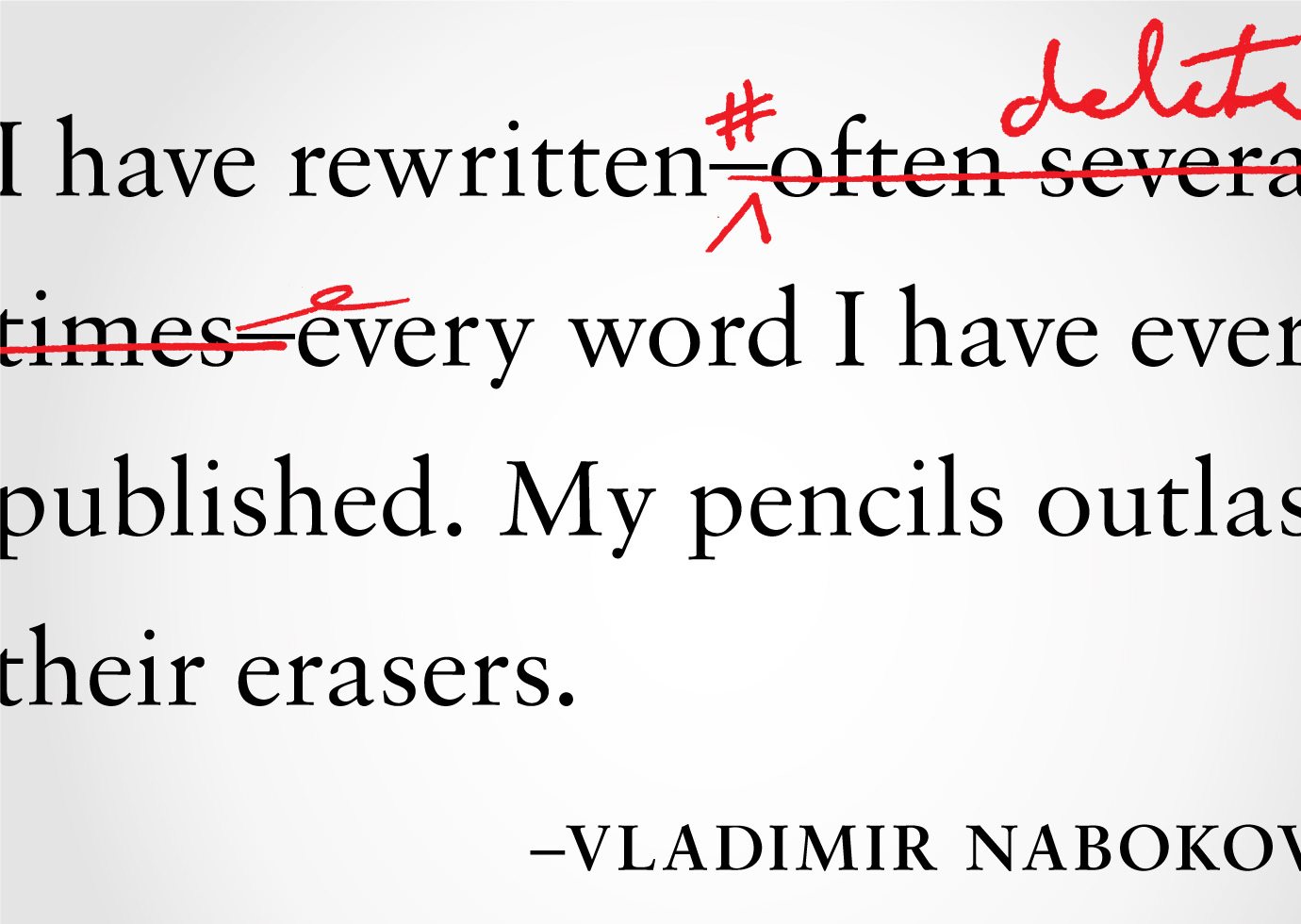Tighten Your Writin’: 6 Tips for Self-Editing
Whether you’re developing social media posts, content for a brochure, or an internal memo to pitch a new idea to your bosses, we strongly recommend self-editing before sharing your work.
Why? Because great copy is not a product of raw talent so much as a reflection of a writer’s dedication to constantly fine-tuning her own words. Here are some of our editorial team’s tips for doing just that.

Tip 1: Look at your work through someone else’s eyes.
Come at your work from your target audience’s point of view. Think about what they want or need to know. Are you stating that clearly? If not, revise. Are you burying the lede? If yes, think about restructuring your piece. Do you have a reason for every single piece of copy you included and every point you make — and could you justify those decisions to a client? If not, chances are you didn’t put enough thought into this draft yet.
Tip 2: Seek an informal peer review.
Getting a friend or colleague’s intuitive, gut-level response to something you’ve written can be enormously helpful and help you take a piece to the next level. And any friend will do. In fact, choosing someone whose own work is very different from yours can be a very smart strategy. The best marketing copy is always smooth, natural-sounding, and memorable. But most importantly, great marketing copy makes sense to a wide range of people. If your buddy doesn’t understand something in your copy or “get” the joke you’re trying to make, you need to make revisions.
Tip 3: Let it marinate.
If you have the luxury of time, make it work for you. Leave your writing for a while — a few hours, overnight, or even a few days. Taking a break allows you to gain some perspective, so you can come back to your writing with a fresh, more objective eye.
Tip 4: Read backwards.
No, don’t turn your paper upside down. Read your copy, a paragraph at a time, from the last paragraph up. Why? Because doing so will make you feel like you’re reading something new, so you can identify redundancies and weaknesses more easily. For example, some writers take a paragraph or two to warm up and really get into their core message — far too long in a digital world.
Tip 5: Take out the adverbs.
Or take out the helping verbs. Some parts of speech add color and detail without adding much to the piece’s core message. Whether you are pressed for space or simply trying to make a piece as tight as possible, they’ve got to go. One technique you can try: Take out all the adverbs or adjectives from your piece, read it carefully, and then only add back in the words that genuinely enhance the copy.
Tip 6: Keep scrap paper.
Sometimes an idea is good, but it’s just not a good match for a particular client, brief, or project. It’s standard practice for our writers to keep a “graveyard” — a space at the bottom of our working drafts for all of our rejected ideas and content. It helps us see patterns in our thinking and approach, course correct as we’re brainstorming, and have a solid bank of ideas ready if our client decides to change direction.